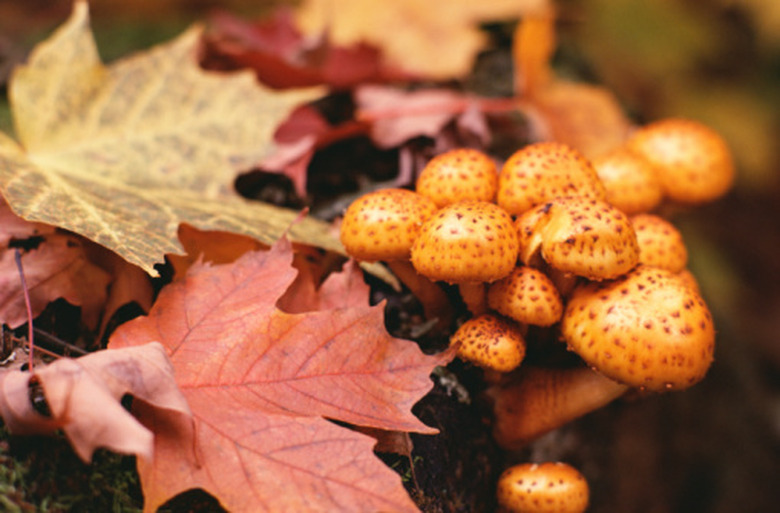Edible Plants That Live In The Deciduous Forest
Deciduous forests are filled with diverse plant life. A deciduous forest's range of plant species depends on the region where it is located. However, any given deciduous forest has some edible plants. It is absolutely necessary that you have a guide on plant species if you are looking for edible plants in the wild. Although there are many potential food sources in the forest, there are also many poisonous plants as well.
Common Jujube
Common Jujube
The common jujube grows in deciduous forests as either a tree or a large shrub, depending on the region and how much water is available. This plant has spiny branches. It produces an edible fruit that is reddish-brown or yellowish-green in color. The smooth fruit is 1-1/4 inches in diameter and tastes sweet. The pulp is drier than in many fruits, and it features a large stone in the middle. The pulp can be crushed in water to make a refreshing beverage. You can also sun-dry the fruit once it is ripe. Common jujube fruit is rich in vitamins A and C.
Puffball Mushrooms
Puffball Mushrooms
Puffball mushrooms come in giant and small sizes. These mushrooms have a solid, white, fleshy interior that becomes porous with age. They are characterized as having large, round "heads" and short stalks that are quite thick. Puffball mushrooms have been described as having a rich flavor, although some people have described the taste as being bland. These mushrooms can be cooked and eaten just as any other edible mushroom. Exercise caution when hunting for puffball mushrooms, particularly the smaller species. The Pigskin Poison Puffball mushroom and the Destroying Angel mushroom are highly poisonous lookalikes. Cut any puffball mushroom you find in half to examine the insides. If your mushroom is safe, there should be no unusual stalk, gill, cap or other tissue differences that would indicate that it is not a safe puffball.
Tree Nuts
Tree Nuts
Some deciduous trees produce nuts that are edible for both animals and humans. The Shagbark hickory tree produces flowers that grow in clusters that form into nuts. These nuts fall to the ground once they are ready to be eaten. The nuts feature a thick husk that takes some effort to get through. The interior flesh has a sweet taste and is a good source of protein. The American beech tree is another nut-producing plant. The nuts fall to the ground once they have ripened to edibility. They contain protein and other nutrients.
Wild Berries
Wild Berries
Blueberries, raspberries and blackberries all grow wild in the deciduous forest. These berries looks similar to their domestic counterparts that are sold in grocery stores, although they are often smaller. These berries grow on shrubs and are favored by birds and bears. As with any wild plant you find that you believe to be edible, you should consult a guide before eating wild berries. Do not eat any berries you are unsure of. Some plants produce berries that are potentially toxic to humans.
Cite This Article
MLA
Clark, Sarah. "Edible Plants That Live In The Deciduous Forest" sciencing.com, https://www.sciencing.com/edible-plants-live-deciduous-forest-8062819/. 22 November 2019.
APA
Clark, Sarah. (2019, November 22). Edible Plants That Live In The Deciduous Forest. sciencing.com. Retrieved from https://www.sciencing.com/edible-plants-live-deciduous-forest-8062819/
Chicago
Clark, Sarah. Edible Plants That Live In The Deciduous Forest last modified March 24, 2022. https://www.sciencing.com/edible-plants-live-deciduous-forest-8062819/
